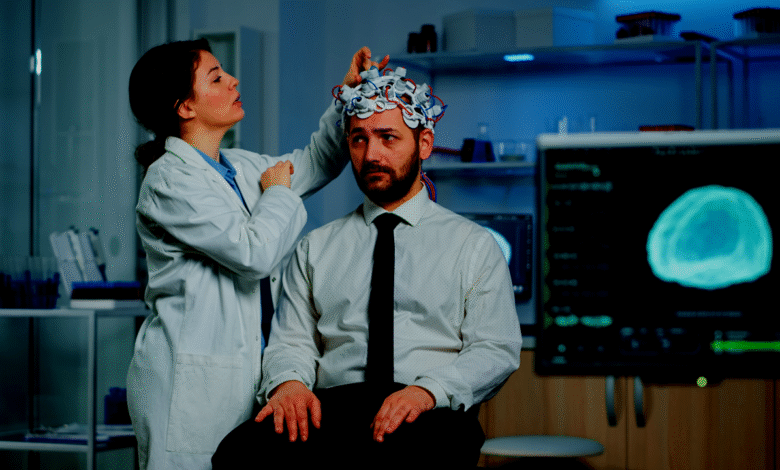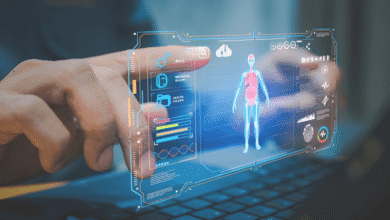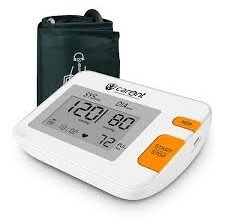How AI is Revolutionizing Early Disease Detection in the U.S.
AI is revolutionizing early disease detection in the U.S. enabling faster more accurate diagnoses through advanced algorithms and predictive analytics. #HealthcareInnovation

AI is revolutionizing early disease detection in the U.S., ushering in a new era of precision medicine where illnesses can be identified and treated before symptoms even appear. By leveraging advanced machine learning algorithms, predictive analytics, and vast medical datasets, artificial intelligence is enhancing diagnostic accuracy, reducing human error, and enabling proactive healthcare interventions. From detecting early-stage cancers to predicting cardiovascular risks, AI-powered tools are transforming how doctors diagnose and manage diseases, leading to improved patient outcomes and more efficient healthcare systems.
The integration of AI into medical diagnostics is particularly impactful in a country where chronic diseases account for a significant portion of healthcare spending. By analyzing medical imaging, genetic data, and electronic health records at unprecedented speeds, AI helps clinicians uncover hidden patterns and make data-driven decisions. This shift not only improves survival rates for life-threatening conditions but also alleviates the burden on healthcare providers, allowing them to focus on personalized patient care. As AI continues to evolve, its role in early disease detection promises to make healthcare more predictive, preventive, and accessible for millions of Americans.
How AI is Revolutionizing Early Disease Detection in the U.S.
Overcoming Limitations of Traditional Diagnostics
Traditional diagnostic methods depend heavily on Manual interpretation of medical images (X-rays, MRIs, CT scans). Subjective analysis of lab results. Time-consuming review of patient histories. These conventional approaches suffer from Human fatigue factors leading to diagnostic errors. Inconsistencies between different practitioners. Delays in processing complex data sets. AI solutions address these challenges by Processing medical data in seconds rather than hours/days. Maintaining consistent performance without fatigue. Detecting subtle patterns invisible to human observers.
Advanced Applications in Oncology
Breast cancer detection AI mammography analysis achieves 99% sensitivity in tumor detection. Reduces false positives by 30% compared to human radiologists. Google’s DeepMind can spot malignancies 11 months earlier than traditional methods. Lung cancer screening AI analyzes low-dose CT scans with 95% accuracy. Identifies tumor growth patterns predictive of metastasis. Reduces unnecessary biopsies by 40%. Prostate cancer diagnosis AI-powered MRI analysis improves detection of clinically significant tumors. Minimizes overdiagnosis of indolent cancers. Predicts tumor aggressiveness with 89% accuracy.
Revolutionizing Cardiovascular Care
Wearable technology integration Apple Watch ECG detects atrial fibrillation with 98% sensitivity. Continuous monitoring identifies arrhythmia patterns missed during clinic visits. Predicts heart failure events 14 days in advance. Advanced risk modeling AI analyzes 257 cardiac biomarkers vs traditional 10-factor models. Predicts 5-year cardiovascular risk with 87% accuracy. Personalizes prevention strategies based on genetic predispositions. Imaging analysis breakthroughs Detects coronary artery disease from retinal scans. Predicts heart attacks by analyzing plaque composition in CT angiograms. Identifies high-risk patients needing immediate intervention.
Ophthalmology Advancements
Diabetic retinopathy screening FDA-approved IDx-DR system provides autonomous diagnoses. Detects microaneurysms 18 months before human specialists. Reduces screening costs by 60% in primary care settings. Glaucoma prediction AI analyzes optic nerve topography changes. Predicts disease progression 5 years in advance. Customizes treatment plans based on AI risk scores. Macular degeneration Detects early fluid accumulation in Disease Detection. Predicts treatment response to anti-VEGF therapy. Reduces vision loss by 72% through early intervention.
Digital Pathology Transformation
Whole slide imaging analysis Processes slides 50 times faster than human pathologists. Identifies rare tumor subtypes with 96% precision. Reduces diagnostic turnaround time from days to hours. Cancer margin assessment AI mapping during surgery reduces repeat operations by 33%. Real-time analysis of frozen sections improves accuracy. Predicts recurrence risk from tumor microenvironment features. Hematopathology applications Differentiates 142 leukemia subtypes from Disease Detection. Predicts chemotherapy resistance markers. Automates complete blood count analysis with 99.8% accuracy.
Public Health and Pandemic Response
COVID-19 applications Predicted outbreak hotspots 3 weeks in advance. Chest X-ray analysis achieved 98% diagnostic accuracy. Optimized ICU resource allocation during surge periods. Emerging disease surveillance Analyzes global health data to Disease Detection pathogens. Predicts zoonotic disease spillover events. Models’ vaccine distribution strategies. Chronic disease management Identifies at-risk populations for targeted interventions. Predicts diabetes complications requiring hospitalization. Optimizes community health worker deployment.
Challenges and Ethical Considerations
Data Privacy and Algorithmic Bias Challenges
HIPAA Compliance & Data Security AI systems require massive datasets of sensitive patient records, imaging studies, and genetic Disease Detection, raising critical concerns about Secure storage and transmission protocols for protected health information (PHI). Potential vulnerabilities to cyberattacks on centralized medical databases. Ethical implications of commercial entities accessing patient data. Solutions include federated learning (where AI trains on decentralized data) and Disease Detection audit trails to track data usage while maintaining privacy. Bias in Training Data Many AI models demonstrate reduced accuracy for minority populations due to Underrepresentation in clinical trial datasets used for training. Racial disparities in healthcare access creating data gaps. Algorithmic reinforcement of existing diagnostic disparities.
Transparency and Regulatory Hurdles
Black Box Problem Many advanced AI systems (especially deep learning models) lack interpretability, causing Physician skepticism about unexplained Disease Detection. Legal liability concerns when AI conclusions contradict clinical judgment. Difficulty identifying errors in algorithmic reasoning chains. Emerging solutions include Explainable AI (XAI) techniques like attention mapping in medical images. “Second-generation” AI that provides reasoning trails similar to physician notes. Hybrid systems where AI flags anomalies but humans make final diagnoses. Regulatory Lag The FDA’s traditional approval framework struggles with Continuous-learning AI systems that evolve after deployment. Algorithms trained on real-world data rather than controlled trials. Rapid iteration cycles (some AI models update weekly).
The Future of AI in Early Disease Detection
The future of AI in early disease detection is incredibly promising. As computing power grows and datasets expand, AI models will become even more accurate and versatile. Personalized medicine will flourish, with AI tailoring prevention and treatment plans based on an individual’s genetic makeup, lifestyle, and environmental factors. Wearable technology and IoT devices will further enhance real-time health monitoring, transmitting data directly to AI systems for instant analysis. Remote diagnostics will become mainstream, particularly in rural and underserved areas, bridging gaps in healthcare access.
Read More: How to Choose the Best Smartwatch for Your Fitness Goals
Conclusion
AI is revolutionizing early disease detection in the U.S., marking a transformative shift in healthcare from reactive treatment to proactive prevention. By enabling earlier and more accurate diagnoses, AI-powered systems are helping to intercept diseases at their most treatable stages, significantly improving patient outcomes while reducing healthcare costs. From advanced imaging analysis to predictive risk modeling, these intelligent systems are augmenting clinicians’ capabilities and creating new possibilities for personalized, preventive medicine that could extend and improve millions of lives.
As this technology continues to evolve, its integration into routine healthcare practices promises to democratize access to early diagnostics, particularly for underserved populations. While challenges around data privacy, algorithm bias, and clinical adoption remain, the potential benefits of AI in early disease detection are too significant to ignore. With proper oversight and continued innovation, AI stands poised to transform the U.S. healthcare landscape, ushering in an era where life-threatening conditions are identified and addressed before they can cause irreversible harm. The future of medicine is arriving early, powered by artificial intelligence.
FAQs
How does AI improve early disease detection?
AI analyzes medical data with high precision, identifying disease patterns earlier than traditional methods, leading to timely interventions.
What diseases can AI detect early?
AI can detect cancers, heart disease, diabetes-related conditions, neurological disorders, and infectious diseases at early stages.
Are AI diagnostics reliable?
Yes, when trained on diverse datasets, AI diagnostics can match or exceed human accuracy, though physician oversight remains essential.
What are the risks of AI in healthcare?
Potential risks include data privacy concerns, algorithmic bias, and over-reliance on technology without clinical validation.
Will AI replace doctors in diagnostics?
No, AI serves as a supportive tool, enhancing doctors’ decision-making rather than replacing their expertise and judgment.











